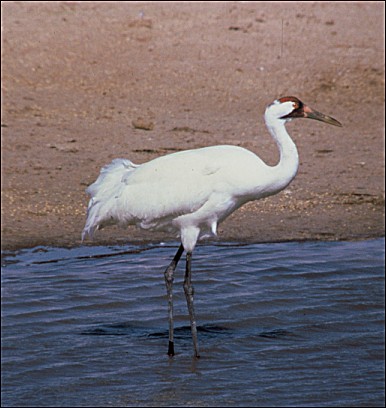

The tallest North American bird is the Whooping Crane, some 5 feet tall. Once widespread, they nested in southern Canada and north-central United States, but occurred in migration down into central Mexico. Populations plummeted in the late 1800s as the cranes, never plentiful, were hunted for plumes to adorn hats of fashionable ladies. Although the Migratory Bird Treaty Act of 1918 brought market hunting of the cranes to an end, destruction of the prairie habitats needed by these magnificent birds left only 15 survivors by 1941.
Establishment of the Aransas National Wildlife Refuge and, later, enactment of the
Endangered Species Act of 1973 has brought the wild population up to about a precarious
200. Our Chihuahuan Desert played a role in one failed experiment. Whooper eggs were
hatched successfully by the more plentiful Sandhill Cranes at the Bosque del Apache
refuge with the hope that the young Whoopers would learn migratory routes from the
Sandhills—and learn they did. Unfortunately, though, they also erroneously
learned that they were Sandhill Cranes and, choosing mates from that species, failed to
reproduce.

![]()
Contributor: Arthur H. Harris, Laboratory for Environmental Biology, Centennial Museum, University of Texas at El Paso.
> Desert Diary is a joint production of the Centennial Museum and KTEP National Public Radio at the University of Texas at El Paso.
A mature Whooping Crane. Photograph by Luther Goldman, courtesy of the U.S. Fish and Wildlife Service.